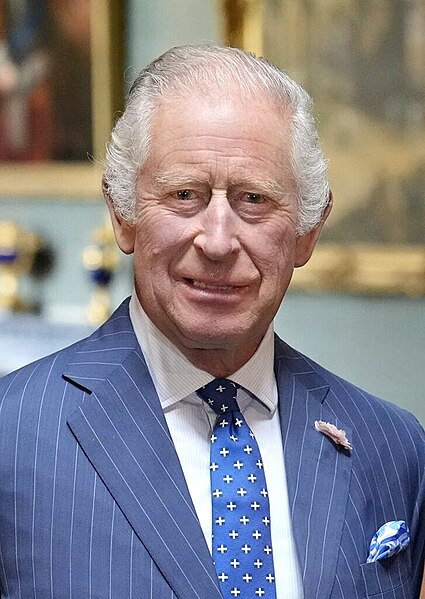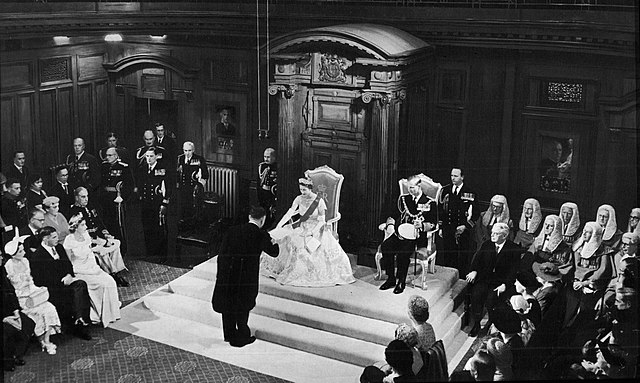The monarchy of New Zealand is the constitutional system of government in which a hereditary monarch is the sovereign and head of state of New Zealand. The current monarch, King Charles III, acceded to the throne following the death of his mother, Queen Elizabeth II, on 8 September 2022 in the United Kingdom. The King's elder son, William, Prince of Wales, is the heir apparent.
Monarchy of New Zealand
Queen Elizabeth II opening a session of the New Zealand Parliament, 12 January 1954
New Zealand Herald Extraordinary, Phillip O'Shea, reading the proclamation of accession of Charles III on the steps of the New Zealand Parliament Buildings, 2022
Queen Elizabeth II with the New Zealand Cabinet, 1981
Constitution of New Zealand
The constitution of New Zealand is the sum of laws and principles that determine the political governance of New Zealand. Unlike many other nations, New Zealand has no single constitutional document. It is an uncodified constitution, sometimes referred to as an "unwritten constitution", although the New Zealand constitution is in fact an amalgamation of written and unwritten sources. The Constitution Act 1986 has a central role, alongside a collection of other statutes, orders in Council, letters patent, decisions of the courts, principles of the Treaty of Waitangi, and unwritten traditions and conventions. There is no technical difference between ordinary statutes and law considered "constitutional law"; no law is accorded higher status. In most cases the New Zealand Parliament can perform "constitutional reform" simply by passing acts of Parliament, and thus has the power to change or abolish elements of the constitution. There are some exceptions to this though – the Electoral Act 1993 requires certain provisions can only be amended following a referendum.

King Charles III, the sovereign of New Zealand
Parliament is central to New Zealand's democratic constitution.
The Treaty of Waitangi is an increasingly important source of constitutional law in New Zealand.






